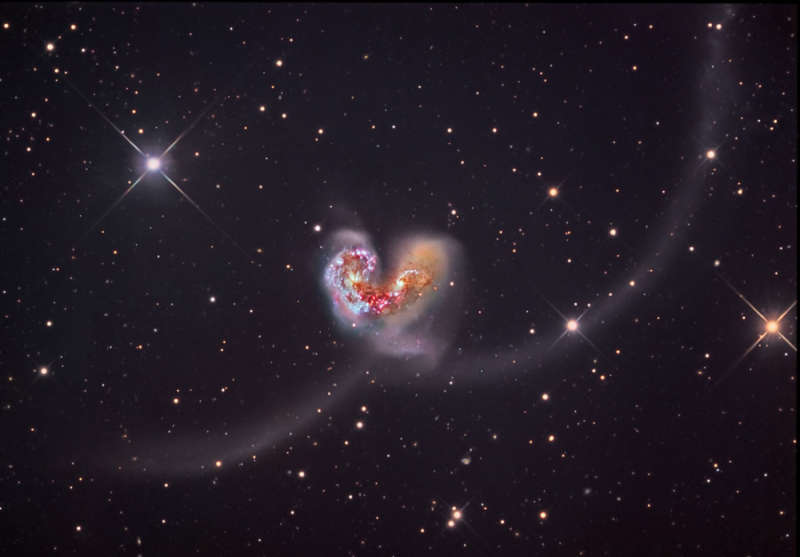Credit & Copyright: Star Shadows Remote
Observatory and PROMPT/CTIO
(Jack Harvey, Steve Mazlin, Rick Gilbert, and Daniel Verschatse)
Explanation:
Some 60 million light-years away in the southerly
constellation
Corvus, two large galaxies
collided.
But the stars in the two galaxies cataloged as
NGC 4038
and NGC 4039 don't collide
in the course of the ponderous, billion year or so
long
event.
Instead, their large clouds of
molecular
gas and dust do, triggering furious
episodes of star formation near the center of the
cosmic wreckage.
Spanning about 500 thousand light-years,
this
stunning view also reveals new star clusters and
matter flung far from the scene
of the accident by
gravitational tidal
forces.
Of course,
the visual appearance of the far-flung arcing structures
gives the galaxy pair its popular name - The
Antennae.
(Jack Harvey, Steve Mazlin, Rick Gilbert, and Daniel Verschatse)
1999 2000 2001 2002 2003 2004 2005 2006 2007 2008 2009 2010 2011 2012 2013 2014 2015 2016 2017 2018 2019 2020 2021 2022 2023 2024 2025 |
Январь Февраль Март Апрель Май Июнь Июль Август Сентябрь Октябрь Ноябрь Декабрь |
NASA Web Site Statements, Warnings, and Disclaimers
NASA Official: Jay Norris. Specific rights apply.
A service of: LHEA at NASA / GSFC
& Michigan Tech. U.
|
Публикации с ключевыми словами:
molecular cloud - столкновения - слияние галактик - сталкивающиеся галактики - приливные силы
Публикации со словами: molecular cloud - столкновения - слияние галактик - сталкивающиеся галактики - приливные силы | |
См. также:
Все публикации на ту же тему >> | |
Мнение читателя [1]
